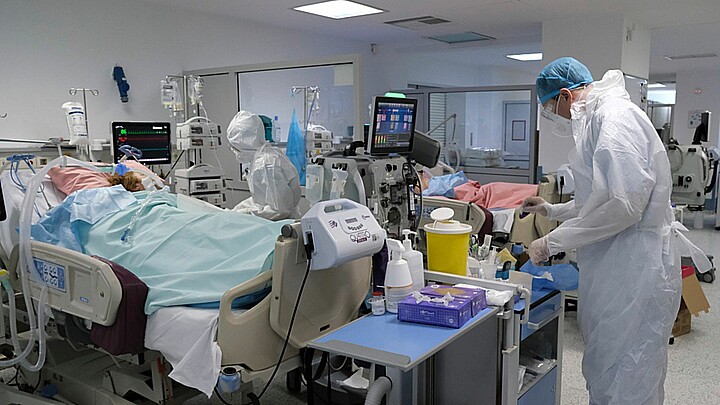Health
Monkeypox is disproportionately affecting Hispanics, CDC data shows
About 54% of the cases were found among Black and Hispanic people, representing about a third (34%) of the general U.S. population
August 24, 2022 8:11am
Updated: August 24, 2022 12:37pm
A recent analysis of the U.S. Centers for Disease Control and Prevention’s (CDC) monkeypox case records conducted on Friday shows that Hispanics are among the main groups that are being disproportionately affected by the virus.
A study analying the 2,891 cases of monkeypox reported in the U.S. by July 22, two months after the first case was found, found that 94% of those infected were men who had had sexual relationships or intimate contact with other men.
About 54% of the cases were found among Black and Hispanic people, representing about a third (34%) of the general U.S. population, according to the CDC analysis.
In Oregon, for example, an analysis from the Oregon Health Authority shows that monkeypox cases In the state are disproportionately hurting Latino men.
“People who identify as Hispanic account for 32 out of the state’s current total of 116 cases. That’s about 28 percent of all cases, in a state that is 14 percent Hispanic,” reported OPB.
Similarly, in Sacramento County, monkeypox is disproportionately affecting Hispanic and White people between 30 and 39 years old, according to a recent study.
"Public health efforts should prioritize gay, bisexual, and other men who have sex with men, who are currently disproportionately affected, for prevention and testing, while addressing equity, minimizing stigma, and maintaining vigilance for transmission in other populations," the authors of the report said.
Earlier this month, the U.S. declared monkeypox to be a public emergency as the number of cases kept rising rapidly.
The first case of monkeypox was reported in the United Kingdom on May 7, since then the disease has spread to several other countries.
Monkeypox is similar to smallpox, although milder. Its symptoms include fever, headache, muscle aches, back pain, chills, and exhaustion. It also causes a rash that looks like blisters, according to the CDC.









